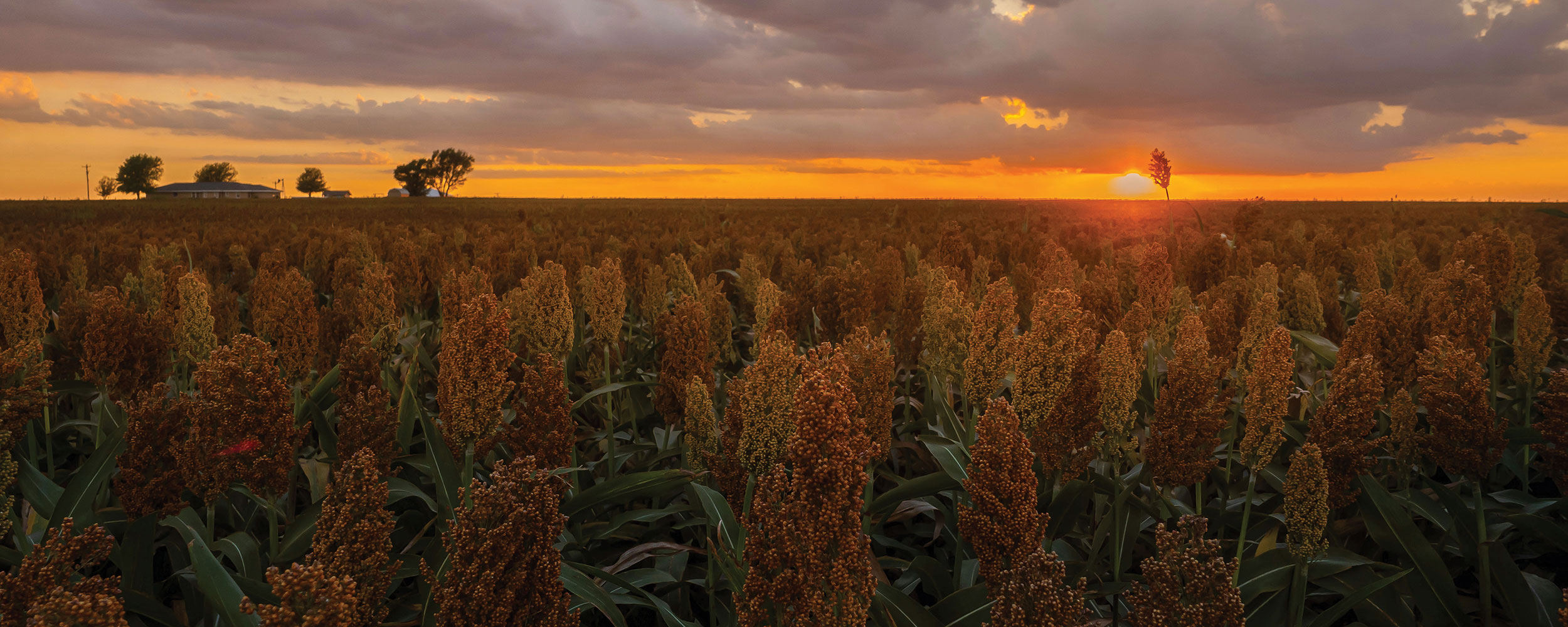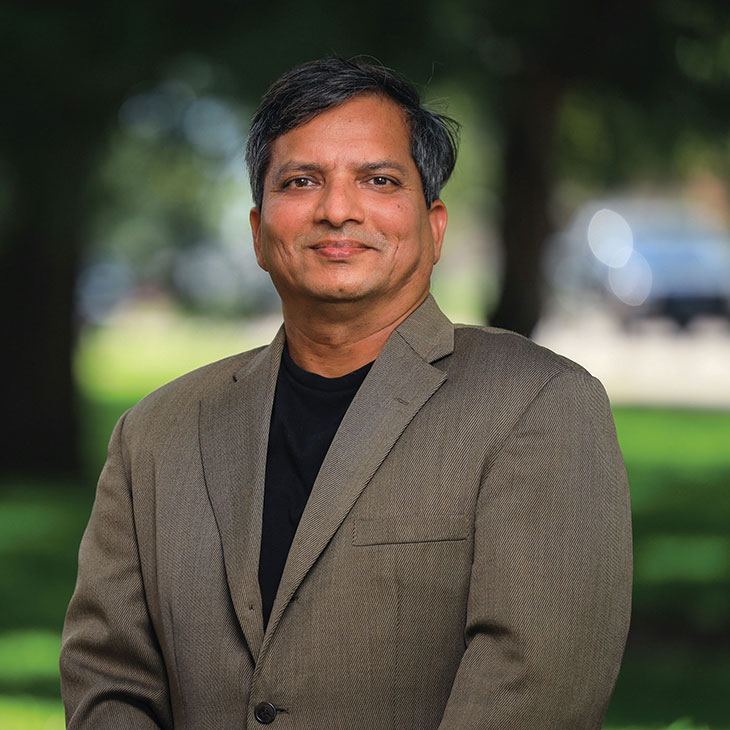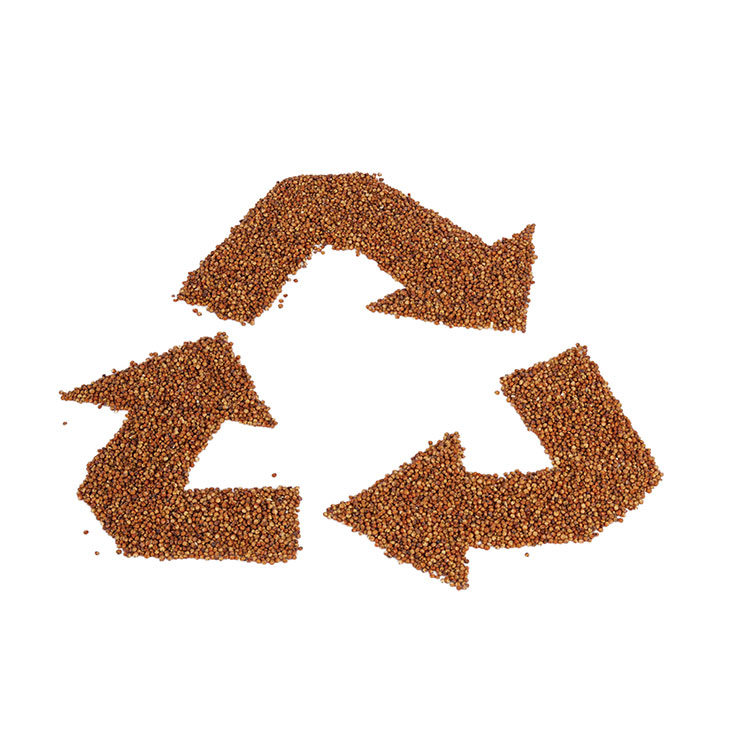
No Man's Land Reclamation
Thursday, June 10, 2021
Media Contact: Samantha Siler | Communications and Marketing Manager | 405-744-2977 | samantha.siler@okstate.edu
Imagine a cool autumn wind stirring against the back of your neck, leaving your skin speckled with goose flesh as you take in the myriad of pastel colors displayed in the westward skyline.
As the wind rustles the leaves of the crop to come, you relish in the feeling of fresh air in your lungs and the approach of a cool evening. This scene is a genuine reward for the hard work of today, yesterday and the days of long ago. Without toil, the crop field before you might not have existed nor would the expanse of beautiful scenery be observable from all directions.
This place is still desolate, a place so antiquated in the history of the past that has come and gone it even garnered the name “No Man’s Land.” Regardless, this land is brimming with biota and other evidence of life.
Such is the setting in the Oklahoma Panhandle region where efforts in sustainability are unfolding through the SMARTFARM initiative.
As a tool, the act of sustainability can be used in a proactive way to confront climate change, said Gopal Kakani, plant and soil sciences professor at Oklahoma State University. Ultimately, actions such as these will prove monumental in the sustainability movement, he added.
According to Merriam-Webster’s dictionary, the act of being sustainable relates to “the method of harvesting or using a resource so that the resource is not depleted or permanently damaged.”
What does this word truly mean today, but more importantly, for the lives of the generations to follow?

Despite the desolation, areas in the Oklahoma Panhandle, in the Texas Panhandle and in southwest Kansas are being used to protect generations to come, Kakani said.
OSU officials, in coordination with Texas Tech University and Kansas State University, began a partnership in researching bioenergy crop production to study grain sorghum in 2020, he said.
Approved and funded by the U.S. Department of Energy, the program’s research and activity began in 2021, said Jeff Edwards, head of the OSU Department of Plant and Soil Sciences.
“We all want to be smart,” Kakani said. “The SMARTFARM initiative represents the Systems for Monitoring and Analytics for Renewable Transportation Fuels from Agricultural Resources and Management. This market is expected to exponentially grow to a value of $200 billion in the coming years.”
Research on behalf of the SMARTFARM initiative focuses on the study of sustainability and carbon sequestration, which is the act of storing and putting carbon back into the soil, Kakani said.
“The goal of the SMARTFARM program is to develop technologies to put organic matter, or carbon content, into the ground while optimizing the ‘gold standard,’” Kakani said.
“The gold standard is the data outputs we produce from this project,” Kakani said. “We collect the data using sensors that measure carbon inputs — or sequestered carbon — in the ground.”
Kakani’s sustainability efforts with the SMARTFARM initiative are praised at OSU, Edwards said.
Kakani’s skillset, reputation and research have been an asset to the department, Edwards added.
“We are fortunate to have Dr. Kakani working in our state and working for the people of Oklahoma,” Edwards said. “I’m proud of the work he does, and I consider us fortunate to have him here.”
Kakani’s efforts with the OSU SMARTFARM initiative are going to have a major impact on what is understood about climate change and sustainability, Edwards said.
“A sustainable system has the least negative impact on the environment,” Edwards said. “To be sustainable, an agricultural system really needs to be both agronomically sustainable and economically sustainable.”
The work and research taking place at the SMARTFARM will lead to a better understanding of climate variability, carbon sequestration and eventually help Oklahoma producers extract value from the carbon market, Edwards said.
“We have to do better with what we have,” said J.B. Stewart, a 75-year-old fourth-generation Cimarron County producer who works with the OSU SMARTFARM. “We must always have a tremendous respect for the land and what it can do while taking joy in what we do as agriculturalists.”
Farmers and ranchers are obligated to take care of the land, he added.
“I’m beyond excited to see what the OSU SMARTFARM research brings in terms of sustainability education,” said Alisen Anderson, owner of Ogeechee Ranch and Anders Farm Enterprises.
All of the research on behalf of the OSU SMARTFARM is conducted by studying grain sorghum, a biomass crop often called milo.
“Milo is an efficient crop that’s growing stages are very similar to corn,” Anderson said. “It thrives in the Panhandle because it’s a drought resistant crop that grows well in that kind of soil.”
The research taking place at the OSU SMARTFARM focuses on grain sorghum’s benefits in creating ethanol products and high-energy, carbon-heavy alcohols that can be used as fuels, Kakani said.
Though the agricultural industry is constantly in the spotlight for its actions regarding climate change, the efforts of Kakani and his counterparts exist to help the farmer, he added.
“Every agricultural system requires inputs,” Edwards said. “The major focus of agricultural systems is to maintain production that is economically viable and meets the food, fuel and fiber needs of the country but uses those inputs the most efficiently.”
Every agricultural system can play an important role in being sustainable, Edwards added.

“If we don’t figure out how to live sustainably, it will be detrimental for the human race,” Anderson said. “Taking care of the world is our right, and as agriculturalists, it’s our job.”
Anderson and her family take pride in running their sustainable crop farming and ranching operation in Fairland, Oklahoma, and throughout Ottawa County, she said.
An adamant believer that sustainability is of utmost importance, Anderson said it provides the answer to feeding the world for decades.
“Sustainability in agriculture has been a buzz word for 20 years,” Stewart said. “It’s taken a different meaning throughout that time frame.”
Now more than ever, farmers and ranchers like Anderson and Stewart are being called to support the sustainability movement.
“Our love and passion as farmers and ranchers is to take something we have and make it better so it can withstand the test of time,” Anderson said.
Anderson and Stewart both said they want to leave the next generation with the opportunity to continue the farming and ranching tradition in a better world.
“For my farm, I want to keep the land just as good and just as productive as it was when I took it over,” Stewart said. “That takes a lot of studying, a lot of learning and a lot of experimenting.”
The future of sustainable agriculture lies in the hands of the current and upcoming generations to make a difference, Kakani said.
The knowledge, tools and passion from previous generations and sustainability research will help the next generation feed the world in years to come, Anderson said.
“It’s not just playing in the dirt anymore,” Kakani said. “We have to face this issue of sustainability now or be confronted with the wrath of Mother Nature in the future.”
You shift your focus from the oil painting of the sky to study your worn leather shoes, as cracked and weathered as the parched ground beneath your feet. As you lower to the ground and scoop up a handful of soil, the thought of your children crosses your mind, and a smile works itself into your tired features.
The soil falls through your fingertips as you think back upon your years. A feeling of pride is met with a brimming adoration and a love not only for the land you so tirelessly tend but also for your family members who will continue the legacy.
They are the future of this land, this heritage, this operation.
They are the future of this world.
Story By: Sarah Harris | Cowboy Journal
